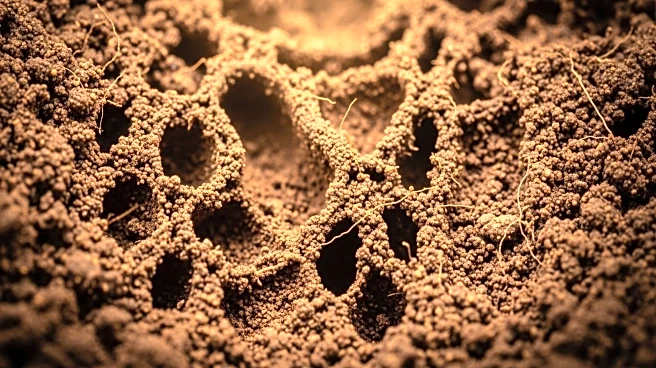What's Happening?
Fungus-farming ants, known as attine ants, have been cultivating their own food for approximately 45 to 60 million years, predating human agriculture. These ants have developed a symbiotic relationship with a specialized fungus, Leucoagaricus gongylophorus, which they cultivate in underground farms. The ants provide plant material for the fungus, which in return produces nutrient-rich structures called gongylidia that serve as food for the ants. This mutualistic relationship is essential for the survival of both the ants and the fungus, as the fungus cannot reproduce independently. Leafcutter ants, a type of attine ant, are found in South and Central America, Mexico, and parts of the southern United States, including Texas and Louisiana.
Why It's Important?
The discovery of ants practicing agriculture challenges the notion that humans are unique in their ability to farm. This ancient form of agriculture demonstrates complex social behaviors and mutualistic relationships in the animal kingdom, offering insights into evolutionary biology and ecology. Understanding these systems can inform studies on sustainability and resource management, as ants have perfected a form of agriculture that supports large colonies without depleting resources. This could inspire new approaches to human agricultural practices, emphasizing symbiotic relationships and ecosystem balance.













